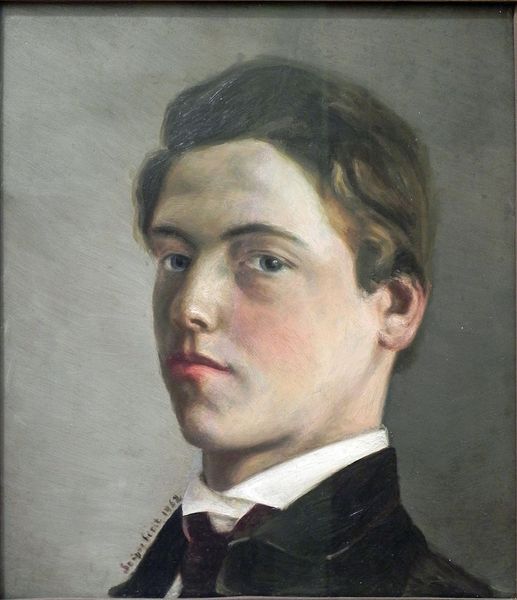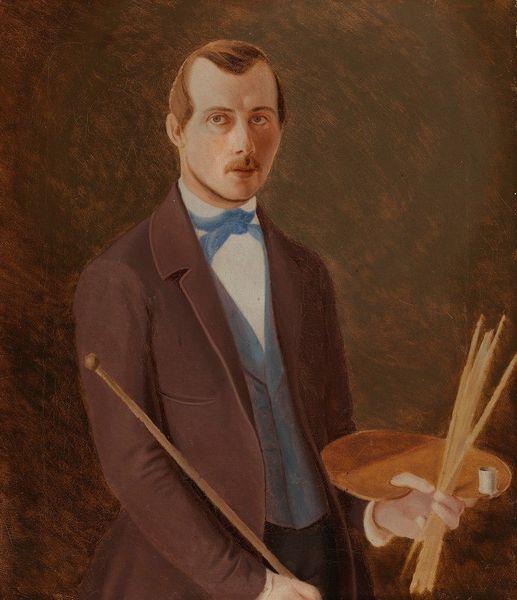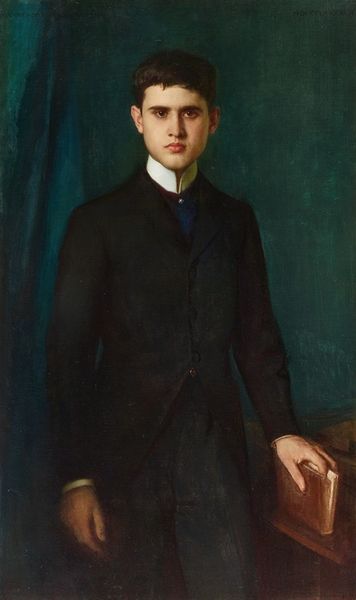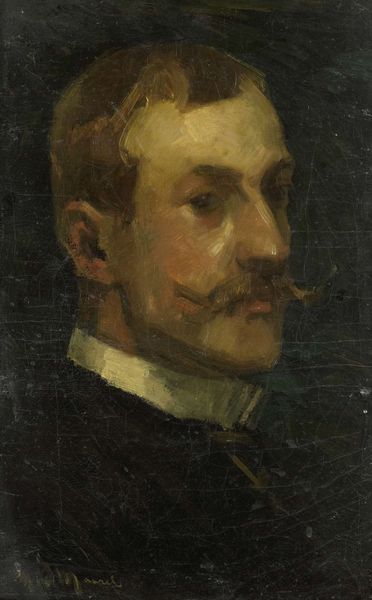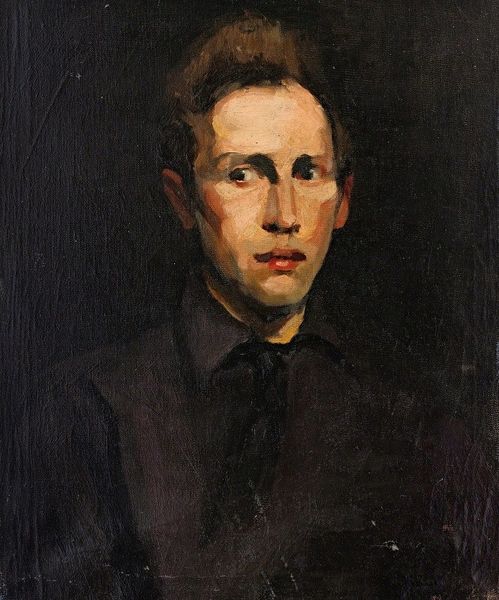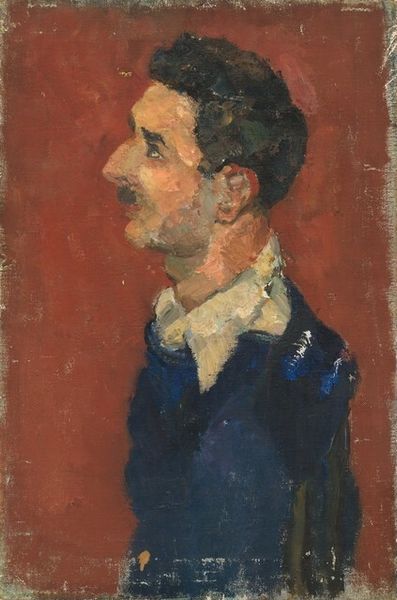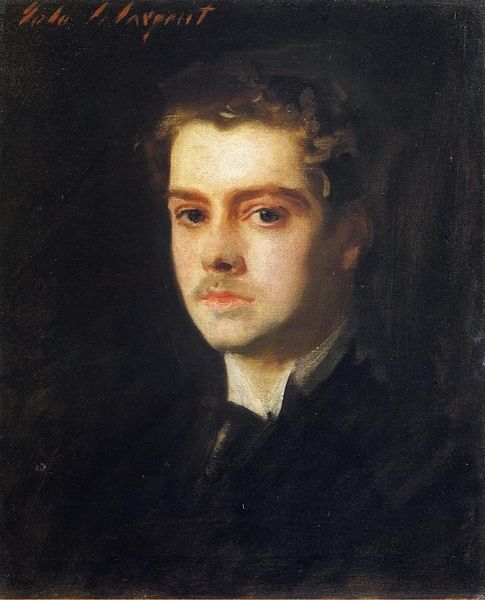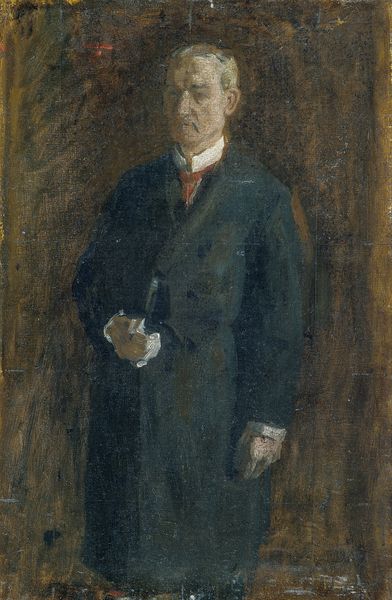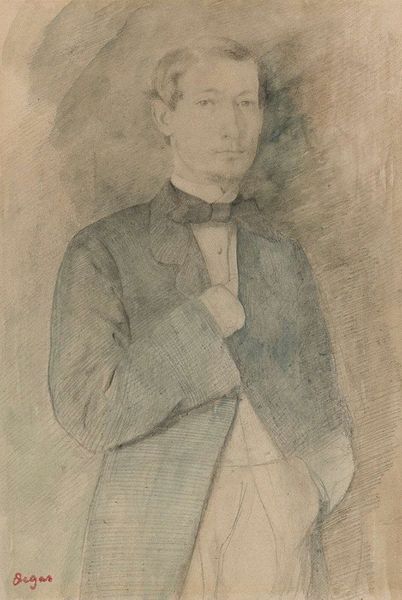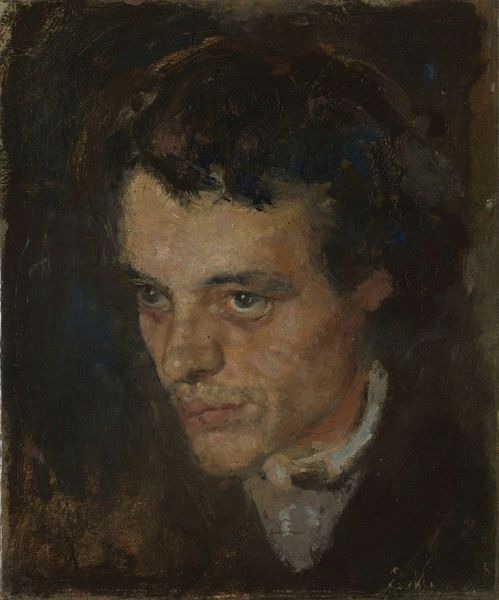
painting, oil-paint
#
portrait
#
figurative
#
painting
#
oil-paint
#
figuration
#
oil painting
#
portrait art
#
modernism
Copyright: Public Domain: Artvee
Helene Schjerfbeck painted this portrait of her father using oil on canvas. The somber attire of the father, particularly the high collar and dark bow tie, speaks of a time when formality reflected a certain societal standing and personal dignity. Yet, let us not confine ourselves to this singular image. Consider the evolution of such neckwear. From the lace jabots of the Baroque era—symbols of aristocratic flamboyance—to the more restrained cravats of the 19th century, we observe a gradual paring down, a movement towards sobriety mirroring broader shifts in social values. The bow tie, a later iteration, retains a vestige of its ornate predecessors, yet hints at a newfound practicality. The act of binding the neck, historically, can be traced to symbols of power and control. Its presence here, however, may also denote a yearning for order, a desire to contain the chaos of existence. The stern gaze of the father, combined with this formal attire, evokes a powerful, albeit restrained, emotional response. Thus, the bow tie, seemingly simple, is charged with a rich history. It embodies a complex interplay between tradition and modernity, flamboyance and restraint, power and vulnerability.
Comments
No comments
Be the first to comment and join the conversation on the ultimate creative platform.

